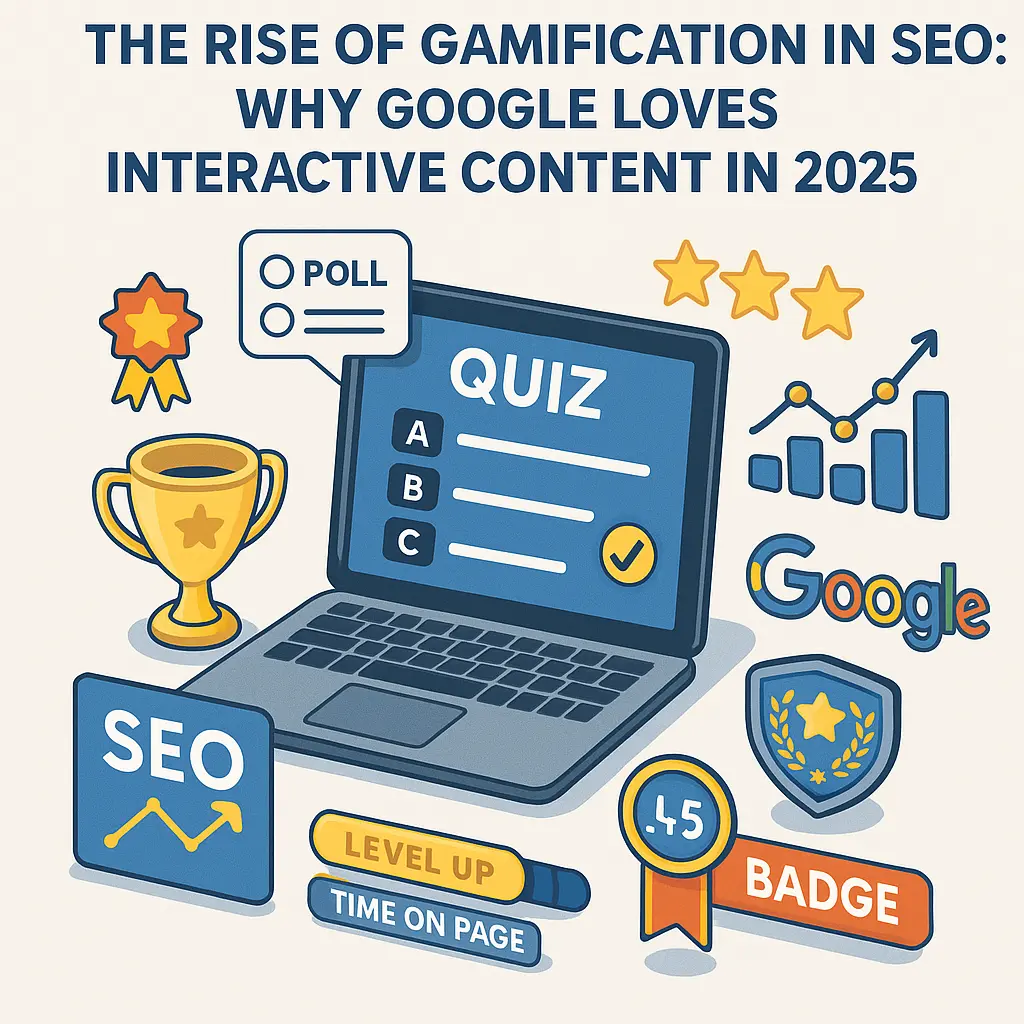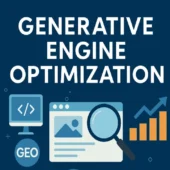By Junaid Imdad, Blogger & Digital Experience Strategist
Five years back, getting a good ranking on Google was pretty simple. If you picked the right keywords, churned out decent content, snagged a few quality backlinks, and made sure your site was mobile-friendly, you had a solid shot at landing in the top search results. SEO felt more like a formula—just a checklist of technical tasks to complete and a numbers game. And honestly, it worked. Websites could attract traffic even if their user experience was just “okay.” But zoom ahead to 2025, and everything has shifted dramatically.
These days, SEO isn’t just about being seen; it’s about providing instant, engaging, and meaningful value. Google’s algorithms have become much smarter, thanks to AI updates, user behavior insights, and innovations like Search Experience Optimization (SEO). Ranking isn’t just about how well your site aligns with a keyword anymore; it’s increasingly shaped by how users engage with your content, how helpful they find it, and whether it genuinely meets their needs in the smoothest way possible.
In this new era, users don’t just want to stumble upon your website—they expect a seamless, personalized, and enjoyable experience once they arrive. That’s where Search Experience Optimization (SXO) comes into play.
SXO blends traditional SEO strategies with UX design, intent-focused content, Core Web Vitals performance, and engagement metrics like dwell time, bounce rate, and interactivity. It’s all about crafting digital experiences that feel intuitive, quick, and valuable from the very first click. Google is now paying closer attention to satisfaction signals than ever before. So, if your content loads slowly, is cluttered with pop-ups, or doesn’t quickly address the user’s question, you’ll see your rankings drop—regardless of how well your page is optimized for keywords.
Think of it this way: SEO brings them in. SXO keeps them engaged—and turns them into customers.
In 2025, SEO and SXO are no longer distinct strategies; they’re two sides of the same coin.
What Is SXO (Search Experience Optimization)?
Search Experience Optimization (SXO) is the next step in the evolution of SEO—designed not just for search engines, but for real people too. By 2025, simply ranking high on Google won’t cut it anymore. You need to provide a smooth, helpful, and enjoyable experience for every visitor who comes to your site.
SXO is a cutting-edge strategy that combines two powerful elements: technical SEO and exceptional user experience (UX). It’s a comprehensive approach that goes beyond just attracting traffic; it’s about satisfying and converting that traffic by prioritizing relevance, usability, speed, and trust. Here’s how the key components of SXO work in harmony:
- SEO (Search Engine Optimization): This remains the cornerstone—keyword research, meta tags, content structure, and on-page SEO are essential for making your site visible and discoverable by search engines. It’s how users find you in the first place.
- UX/UI Design: SXO takes it a step further by ensuring your design is clean, mobile-friendly, and user-centric. Navigation should feel effortless. Pages need to load quickly, with clear calls to action and an intuitive layout. A beautiful, seamless design keeps users engaged.
- Content Relevance & Intent Matching: SXO guarantees your content addresses the user’s question right away. This means leveraging AI-driven keyword intent matching, concise formatting, visual content, and practical value—not just fluff or keyword stuffing.
- Trust Signals & E-E-A-T Compliance: In 2025, Google’s E-E-A-T guidelines (Experience, Expertise, Authoritativeness, and Trustworthiness) will be crucial for ranking. SXO integrates author bios, citations, HTTPS security, and user-friendly layouts to establish immediate trust.
- Engagement & Conversion Optimization: What’s the point of traffic if it doesn’t lead to conversions? SXO combines CRO (Conversion Rate Optimization) techniques—like smart CTAs, behavioral popups, and funnel design—to turn visits into meaningful actions.
Why SXO Is the Future of Search in 2025
Search engines have evolved far beyond the basic keyword-matching tools they used to be. By 2025, platforms like Google are now heavily influenced by artificial intelligence (AI), machine learning, and real-time user behavior signals to figure out which pages deserve to sit at the top of the search results.
This shift means that SEO is no longer just about picking the right keywords—it’s about grasping how users interact with your site once they arrive. Google’s algorithms now take into account factors like how long someone stays on your page, the bounce rate, click-through patterns, mobile usability, and more to assess whether your content is truly valuable.
For instance, if a user clicks on your link from the search results but bounces away within seconds because your site is cluttered, slow to load, or hard to navigate, Google interprets that as a warning sign. Even if your content is packed with keywords and technically sound, poor engagement indicates that the user experience (UX) is falling short. The outcome? A significant drop in your rankings.
This is why Search Experience Optimization (SXO) has become a crucial part of effective SEO strategies in 2025. It’s particularly important for local searches, where users are often seeking quick solutions like “best coffee near me” or “urgent mobile repair in [city].” In these situations, users expect rapid results, user-friendly page designs, and easy ways to take action—whether that’s calling a business, booking an appointment, or getting directions.
If your website provides that smooth experience, Google will reward you. If it doesn’t, your competitors could easily outrank you—even if their content is just as optimized or slightly less so—simply because their user experience is superior.
Search experience has transitioned from being a nice-to-have to a critical ranking factor.
Here’s the truth: By failing to improve user experience for local searches, not only are you losing rankings — you are losing real customers as well.
Core Pillars of SXO in 2025
To thrive in today’s digital marketing era, your website must serve both humans and machines alike. Here’s how:
1. Content with Intent
Traditional SEO used to revolve around keywords—just sprinkle the right phrases throughout your content, snag a few backlinks, and you’d be in the running for a decent ranking. But fast forward to 2025, and semantic search along with Search Experience Optimization (SXO) have completely shifted the landscape.
These days, search engines are paying less attention to the exact words users type and more to the reasons behind those words.
When someone types a query into Google now, the algorithm is on a mission to decipher their intent. Are they seeking information? Weighing their options? Ready to make a purchase? The closer your website content aligns with this search intent, the better your chances of ranking high—and the more likely you are to convert those visitors into customers.
Consider some typical user journeys like:
- “What is the best project management tool in 2025?” – This person is in research mode.
- “ClickUp vs. Trello comparison” – They’re in the comparison phase.
- “Buy ClickUp premium plan” – They’re primed to take action.
Your website should mirror this journey, providing clear pathways for each stage. Start with informative blog posts that tackle initial questions, then lead them to comparison pages, case studies, or reviews, and ultimately guide them to product pages or contact forms for conversions. This smooth transition is the essence of Search Experience Optimization. It’s no longer just about ranking; it’s about understanding, engaging, and guiding your audience. The more your content reflects the real journey a user takes from curiosity to decision-making, the more successful your SEO efforts will be.
Pro tip: Utilizing tools such as Google Search Console and AI-powered analytics will enable you to gain insight into searcher behaviors, and fine tune content accordingly.

2. Page Speed & Mobile Optimization
IIn 2025, users will expect websites to load in under two seconds, especially when they’re browsing on mobile devices like iPhones or Androids. If your site takes any longer, most visitors will just leave—it’s called bouncing. And believe me, Google is paying attention. Page speed isn’t just a “nice to have” anymore; it’s a crucial ranking factor that directly impacts user experience and conversion rates.
Think about it: you’ve invested money to drive traffic to your landing page through paid ads or social media. But if that page takes 3, 4, or even 5 seconds to load?
You’re losing out on potential leads.
Research shows that:
- A 1-second delay in page load can cut conversions by up to 20%.
- Mobile users are more impatient than those on desktops.
- Bounce rates soar with every extra second of delay.
That’s why Search Experience Optimization (SXO) puts a strong emphasis on speed and responsiveness. It’s not just about getting users to your page; it’s about keeping them engaged and guiding them toward taking action.
Here are some smart practices that SXO-focused sites often use:
- Implementing AMP (Accelerated Mobile Pages) or responsive frameworks
- Using lazy loading for images and videos
- Optimizing assets (like JavaScript and CSS) to minimize bloat
- Efficiently compressing and caching content
- Choosing lightweight, mobile-friendly themes
At the end of the day, every second counts—especially in a mobile-first world. Whether it’s a product page, a blog, or a contact form, a super-fast experience keeps users happy and boosts your visibility in search engines.
3. User Flow
Imagine stumbling upon a website that feels like a maze—menus that make no sense, buttons hidden away, and you have to click through five different pages just to find a way to contact someone. Frustrating, right? That’s exactly the kind of experience your users have when UX design takes a backseat.
In 2025, top-notch SEO is all about pairing it with a fantastic user experience (UX). A well-organized, easy-to-navigate website makes it simple for visitors to:
- Quickly find the information they need without sifting through endless content
- Know exactly where they are in their journey on your site at any moment
- Achieve their goals swiftly—whether that’s making a purchase, signing up for a newsletter, or diving into a blog post
- Feel empowered and confident while interacting with your site
This goes beyond just looking good. Thoughtful, user-focused navigation boosts essential SEO metrics like:
- Dwell time – People linger longer because the site is user-friendly
- Pages per session – Visitors are more likely to explore when they can easily find what they’re looking for
- Bounce rate – Users are less inclined to leave early if the site is easy to use
- Conversion rate – Smooth pathways lead to more successful goal completions
Search engines like Google are now paying attention to user signals such as pogo-sticking (jumping back to search results) and session duration when determining website rankings. So, if your navigation frustrates users, it’s not just a loss in conversions—it’s a hit to your rankings too.
To improve UX structure for SXO:
- Utilize clear headings and breadcrumbs
- Establish a logical page hierarchy with parent/child relationships
- Keep menus straightforward, accessible, and mobile-friendly
- Incorporate search functionality for larger sites
- Link related content internally to minimize dead ends
In a nutshell: a user-friendly structure isn’t just a nice-to-have anymore—it’s essential for achieving modern SEO success.

4. Customized Search Experience
Gone are the days when everyone saw the same search results or web content. In today’s digital world—especially in 2025—personalization has become a must, not just a nice-to-have. Visitors are looking for content that feels custom-made for them, taking into account their needs, intent, location, and even the device they’re using.
With Search Experience Optimization (SXO) leading the way, businesses are harnessing AI-driven personalization to provide smarter search results and on-site experiences. This includes:
- Geo-targeted content that reflects a user’s real-time location
- Behavioral customization based on past searches, time spent on pages, and device history
- Intent-based suggestions, like one-click appointment scheduling for emergency plumbers when someone searches “burst pipe help in New York” from their mobile phone
- Localized reviews, personalized contact forms, or store directions that automatically adjust based on how and where the user is searching
For example, if someone is searching for “best sushi near me” at 7 p.m. on a Saturday from an iPhone, they’re likely ready to eat right away. An optimized experience might show:
- Nearby restaurants that are open
- Google ratings
- Walking directions via Apple Maps
- A click-to-call button
This hyper-personalized search experience not only meets expectations—it gives you a competitive edge. When your site provides more relevant and seamless results than your competitors, users will naturally gravitate towards you.
So, why is this important for SEO?
Because Google pays attention when users stick around longer, bounce less, and achieve their goals. All of these behaviors signal that your site offers a quality experience, which can lead to higher rankings.
5. Trust Signals & Conversion Optimization
Customers prefer buying from brands they trust; if your website appears outdated or lacks credibility indicators, users will leave quickly.
- Trust indicators may include:: and visible contact info
- Verified Google Reviews with HTTPS security for testimonials and case studies.
- Transparent pricing and policies
These elements are crucial in optimizing search experience optimization as they reduce friction and boost confidence in your brand.
SXO in Action: Real-World Local Search Example Let’s say someone searches for “best sushi near me.” In the top search results are two restaurants:
Restaurant A: Outdated hours, an awkward mobile site and no online reservation system.
Restaurant B: For quick mobile-optimized browsing experience and two-click booking of online reservations.
Which product or service do you think attracts more customers?
SXO in action. Not just finding but being chosen and trusted!
Search Experience Optimization (SXO) goes beyond just boosting organic traffic; it’s also a vital component for achieving success in paid search. As we look ahead to 2025, with advertising platforms becoming increasingly competitive and the cost-per-click (CPC) on the rise, simply pouring money into Google Ads and hoping for the best just won’t cut it anymore. If your post-click experience isn’t optimized, you might get clicks from your ad spend, but you won’t necessarily gain customers.
The Paid Traffic Trap: High Costs, Low Conversions
Many businesses are shelling out thousands each month on PPC campaigns—especially on platforms like Google Ads or Meta Ads—but they often don’t see a return on their investment. What’s the reason behind this? They overlook the importance of the post-click journey.
Picture this scenario:
You’ve set up a PPC ad for “emergency AC repair in Los Angeles.” A potential customer clicks on your ad, costing you $12, but they land on a bland homepage or a sluggish site that lacks a clear call to action. Frustrated, they leave and end up calling your competitor—meanwhile, you’ve already paid for that click.
This is where Search Experience Optimization comes into play, helping to close that gap.
Integrate SXO into your paid search strategy for maximum effect:
- Align ad messaging with landing page content
- Enhance Quality Scores while Reducing CPC
- Increase Conversion Rates Success for both marketers and users!
Final Thoughts: SEO Is No Longer Enough
By 2025, optimizing for search engines alone may no longer suffice – both users and algorithms expect more.
Search Experience Optimization (SXO) aims to bring humanity back into digital experiences by creating websites that are not only discoverable but also functional, intuitive and pleasurable for their visitors to navigate. If you want to get info about gamification in SEO, simply click on it.

If you want to dominate local search, increase conversion from paid traffic, and future-proof your SEO strategy – start focusing on SXO!
Modern search is no longer about simply gathering information; it is also about experiencing it.
What Is Your search experience optimization strategy? Are You Optimizing Search Experience, but Suffer from User Satisfaction Issues? Share Your Thoughts in the Comments – let’s open up this discussion!
By Junaid Imdad, Blogger & Digital Experience Strategist



Generative Engine Optimization (GEO) and Why it Is the Future of SEO in 2025 - Devitcity
[…] Is the Difference? Search Engine Optimization (SEO) has long been considered the backbone of digital marketing, featuring optimization of website […]
Google's 2025 Helpful Content Update: What You Should Change Right Away - Devitcity
[…] 4. Drop Outdated SEO Tactics […]
Artificial Intelligence Versus Human-Written Content: Which Will Perform Better for Ranking in 2025? - Devitcity
[…] compliant with Google guidelines is the key to dominating SERPs. If you want to get info about SXO, simply click on […]
Social Media Trends in 2025: What’s Working on Instagram, TikTok, and LinkedIn - Devitcity
[…] you want to get info about social experience optimization, click on […]
Mobile-First SEO: Why It’s More Critical Than Ever - Devitcity
[…] Want to know how search is evolving beyond traditional SEO? Read: What is Search Experience Optimization (SXO)? […]
FlexClip Review 2025: The Best AI Video Editing Tool for Marketers and Beginners - Devitcity
[…] Discover more ways to humanize your brand in Search Experience Optimization (SXO) […]
Google’s 2025 Helpful Content Update Explained: What You Must Fix Today
[…] 4. Drop Outdated SEO Tactics […]
The Complete Digital Growth Plan for Startups in 2025
[…] to know about Search Experience Optimization, simply click on the […]